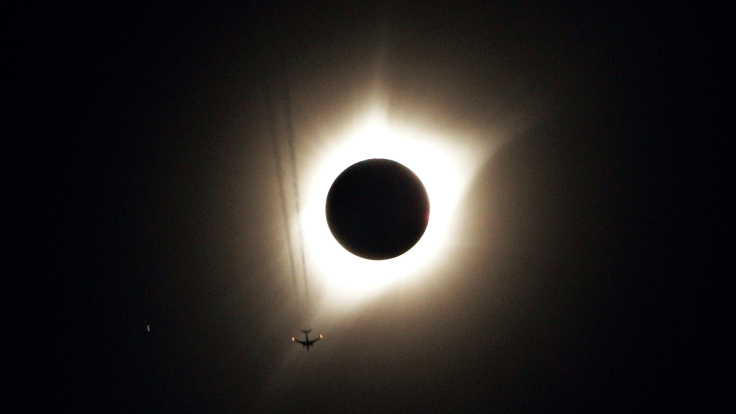Solar Eclipse 2025: Strange Things That Could Happen If Six Minutes Of Darkness Unfolds
Partial eclipses in 2025 may still produce eerie light and shadow effects

A viral claim circulating online suggests that the world will plunge into six minutes of total darkness on 2 August 2025 due to a solar eclipse. The rumour, widely shared on social media and video platforms, has raised questions among the public.
However, according to NASA and multiple astronomers, there is no total solar eclipse scheduled for that date, and the idea of a global blackout is entirely false. In reality, two partial solar eclipses will occur in 2025, on 29 March and 21 September, with visibility limited to specific regions.
What Is Actually Happening in 2025?
The first partial solar eclipse of the year took place on 29 March 2025, and was visible across parts of Europe, northeastern North America, Greenland, and western Russia. The second will occur on 21 September 2025, with visibility from Australia, Antarctica, Pacific Ocean, and Atlantic Ocean, per NASA. Neither event will result in totality, and no part of the world will experience six minutes of complete darkness.
The confusion appears to stem from a real astronomical event scheduled for 2 August 2027, when a total solar eclipse will deliver more than six minutes of totality across parts of Africa, the Middle East, and Europe.
That event, being hailed as the 'eclipse of the century', has led many to wonder what strange things or rare effects might be seen during such an extended period of total darkness. While the 2025 eclipses will only be partial, past full eclipses give us insight into the unusual visual and environmental phenomena that could occur when daylight temporarily disappears.
Shadow Bands and Optical Illusions
Even partial solar eclipses can produce unusual visual effects. One of the most curious phenomena observed during eclipses is the appearance of shadow bands – thin, flickering lines of alternating light and dark that ripple across surfaces just before and after maximum coverage. These bands are caused by atmospheric turbulence distorting the remaining sunlight.
Additionally, observers may notice crescent-shaped projections created by gaps in tree leaves or through household items like colanders. At sunrise or sunset during an eclipse, the Sun may appear as two curved 'horns' peeking above the horizon, adding to the eerie visual experience.
Rapid Temperature Drops and Weather Changes
As the Moon blocks the Sun, even partially, solar radiation decreases, leading to measurable drops in temperature. In past eclipses, localised cooling of 1 to 10°C has been recorded. While the 2025 events are partial and unlikely to produce extreme temperature changes, areas with higher coverage could still experience noticeable shifts.
The sudden cooling can also influence wind speed and direction, and in some cases, even cloud formation or dissipation, especially for shallow cumulus clouds.
Wildlife Reactions to Sudden Darkness
Animal behaviour often shifts during solar eclipses. Birds have been observed going silent or returning to their nests, while crickets and cicadas may begin chirping as if night has fallen. Domesticated animals and livestock may also respond with signs of confusion or altered patterns, especially in areas approaching near-total coverage.
These behaviours have been documented during previous eclipses and offer a fascinating look at how closely animals rely on light cues in their environment.
Weird Eclipse Shadows
During the peak of an eclipse, even shadows behave abnormally. Regular objects may cast sharper, more distorted, or doubled shadows due to the Sun's narrowed light source. Tree leaves often act as natural pinholes, casting dozens of tiny crescent suns onto pavements and walls.
These optical distortions contribute to the surreal atmosphere many describe during significant eclipses, even without totality.
Scrambled Radio Waves
According to NASA, solar eclipses can also affect radio communication, particularly on shortwave frequencies. As the Sun's radiation temporarily decreases, the ionosphere – the atmospheric layer that reflects radio waves – changes in density. This can disrupt or enhance signal propagation, depending on timing and location.
Amateur radio operators often track eclipse paths to observe and record these brief signal anomalies, which are of interest to both hobbyists and researchers.
© Copyright IBTimes 2025. All rights reserved.




















